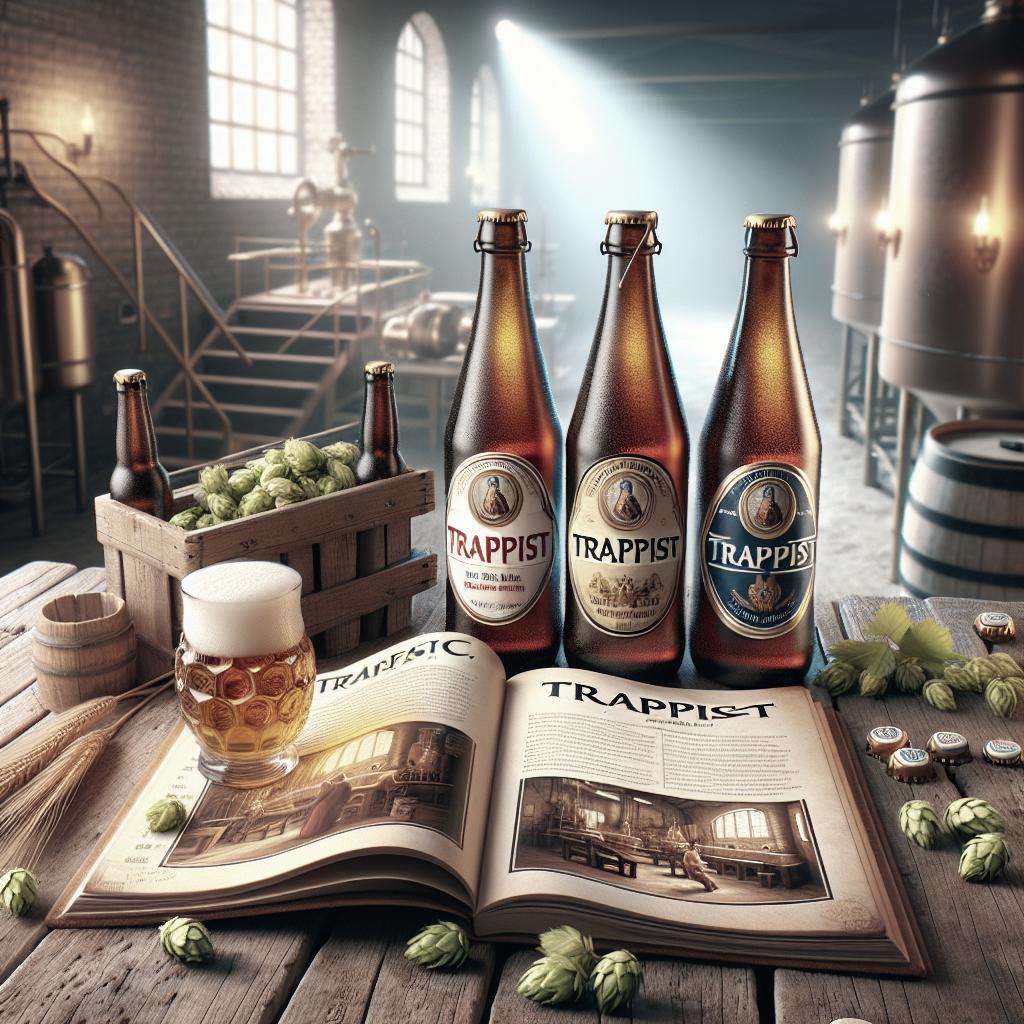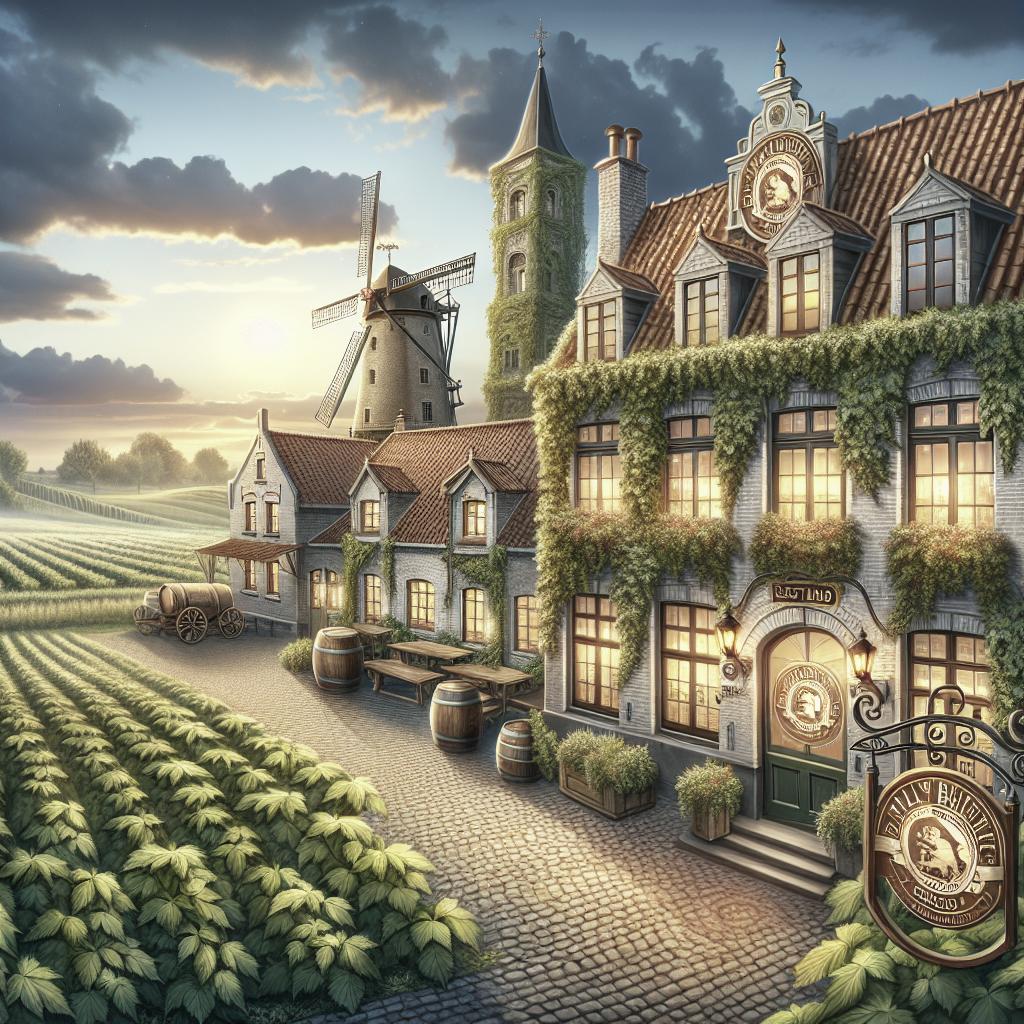“`html
How to Recognize Authentic Trappist Beers
Beer connoisseurs and casual drinkers alike may have heard of Trappist beers but recognizing an authentic one requires a bit of knowledge. With a rich history stretching back numerous centuries, the term “Trappist” is protected, restricting the name to only a select few brews. Originating styles like Dubbel and Tripel, these beers maintain a uniqueness that stems from their monastic roots. Currently, only ten Trappist breweries operate worldwide, each upholding the tradition and quality of this esteemed beverage. In this post, we’ll delve into how Trappist beers differ from Abbey beers and why serving them in chalices enhances the experience. Based on insights from beer and wine aficionado Josh Beamish, you’ll be equipped with the tools to appreciate these iconic brews.
Fact #1: Trappist brewing dates back multiple centuries
The origin of Trappist brewing is deeply rooted in the monastic traditions of the Roman Catholic Cistercian order, specifically within the reformist branch known as the Trappists. Brewing in monasteries can be traced as far back as the Middle Ages, a practice born out of necessity as monks were often self-sufficient, crafting their food and drink. Over the centuries, the brewing techniques evolved and refined, giving rise to unique beer styles that we now associate with Trappist breweries.
Monks brewed beer not purely for ascetic reasons, but fundamentally as a means of providing sustenance. The rigorous devotion of monks to their craft has resulted in high-quality brews that are cherished and respected globally. This long-standing heritage underpins the value seen in Trappist beers today, serving as a testament to the enduring legacy of tradition in brewing.
Fact #2: Trappist is a protected term
The term “Trappist” is not merely a description but a designation protected by the International Trappist Association (ITA). This means that only beers brewed within the walls of a Trappist monastery, under the guidance and care of the monastic community, can bear the “Authentic Trappist” label. This exclusive certification ensures the use of specific monastic criteria and adherence to profound traditions.
In order to secure and maintain this designation, the Trappist breweries must fulfill several stringent requirements. These guidelines include brewing within the confines of a Trappist abbey, the supervision of monastic leadership, and reinvestment of the proceeds towards monastic endeavors and charitable missions. This protected status not only ensures quality but also the integrity of the Trappist brewing tradition.
Fact #3: Dubbel and Tripel beer styles were originally Trappist
The brewing history of Trappist beers introduced iconic styles such as Dubbel and Tripel. These styles are considered quintessential expressions of the Trappist brewing tradition. Dubbels are typically dark, rich beers with a deep caramel flavor profile, making them perfect for fans of malt-forward beers. Tripels, on the other hand, are lighter in color with a complex, fruity, and spicy character, known for being higher in alcohol.
Dubbel and Tripel were developed by Trappist monks and their recipes have been shared and adapted by brewers around the world, thus influencing the broader spectrum of Belgian beer styles. The innovation and refinement within Trappist monasteries have arguably set the standard for excellence in these beer categories, inspiring countless breweries outside the monastic walls.
Fact #4: Only 10 Trappist breweries exist worldwide
While the popularity of Trappist beers has grown internationally, the number of Trappist breweries remains small, reflecting the exclusivity and rigorous standards upheld by the ITA. As of now, there are only ten certified Trappist breweries across the globe. These consist of six in Belgium, two in the Netherlands, and one each in Austria and the United States.
Each of these breweries has its own unique story and approach to brewing, yet they all share a common purpose – to craft high-quality beer while maintaining monastic ideals. The limited number of these breweries highlights the rarity of authentic Trappist beers and fosters appreciation among aficionados who value tradition and craftsmanship.
Fact #5: Trappist beers are best served in chalices or goblets
To fully appreciate the nuanced flavors and aromas of Trappist beers, they are traditionally served in chalices or goblets. These vessels are designed with a wide mouth that releases the bouquet of the beer, allowing the drinker to savor the full sensory profile. The aesthetic aspect of using a chalice or goblet also heightens the drinking experience, making it an almost ceremonial event.
The shape of these glasses not only enhances the olfactory appeal but also allows for a gentle swirl, facilitating a proper mix of the beer’s elements. This practice is rooted in the monastic appreciation for the artistry of brewing, promoting a mindful and contemplative experience while enjoying a Trappist beer.
Abbey beers vs Trappist beers
Though Trappist and Abbey beers are often associated with monastic brewing, they differ significantly in terms of authenticity and regulation. While Trappist beers are strictly brewed within Trappist abbeys, Abbey beers can be produced by secular brewers who license the brand name or brew according to monastic recipes. Abbey beers do not have to adhere to the same rigorous standards as those of Trappist breweries, making them more varied in quality and style.
This distinction can be a key identifier for beer enthusiasts seeking authenticity. Trappist beers are a recognized trademark of quality, whereas Abbey beers, though perhaps inspired by monastic traditions, may lack the same level of authenticity. Understanding these differences is crucial for those who appreciate the history and craft underpinning these esteemed beverages.
This blog post was written by Josh Beamish, Digital Marketing Manager at WSET. A devoted fan of Californian Pinot Noir and Italian Nebbiolo, Josh’s holidays often revolve around wine regions. When not sipping wine, he enjoys craft beer or a well-made Negroni.
A lifelong enthusiast in all things libation, Josh Beamish combines decades of personal exploration in the wine and beer world with his professional background in digital marketing. His expert insights are informed by both a rigorous professional dedication to understanding market trends and the genuine passion of a consumer enthralled with the classic and the new.
His author’s note reveals his broad appreciation for nuanced flavors and bold profiles, whether found in the vineyards of California or the breweries of Europe. Beamish’s multi-faceted experience extends beyond just wine, delving into the hearty world of craft beers which offers infinite variety for enthusiasts like himself.
Summary of Main Points
| Fact/Section | Details |
|---|---|
| Trappist brewing dates back multiple centuries | Rooted in monastic tradition, Trappist breweries have operated for hundreds of years. |
| Trappist is a protected term | Only beers brewed within Trappist monasteries can carry the Authentic Trappist label. |
| Dubbel and Tripel beer styles were originally Trappist | These styles originated within Trappist monasteries and are now iconic in the beer world. |
| Only 10 Trappist breweries exist worldwide | Limited number of breweries emphasizes their exclusive and high-quality craft. |
| Trappist beers are best served in chalices or goblets | These vessels enhance the beer’s flavor and aroma, offering a fuller sensory experience. |
| Abbey beers vs Trappist beers | Abbey beers lack the same authenticity regulations, though they may be inspired by monastic traditions. |
“`


